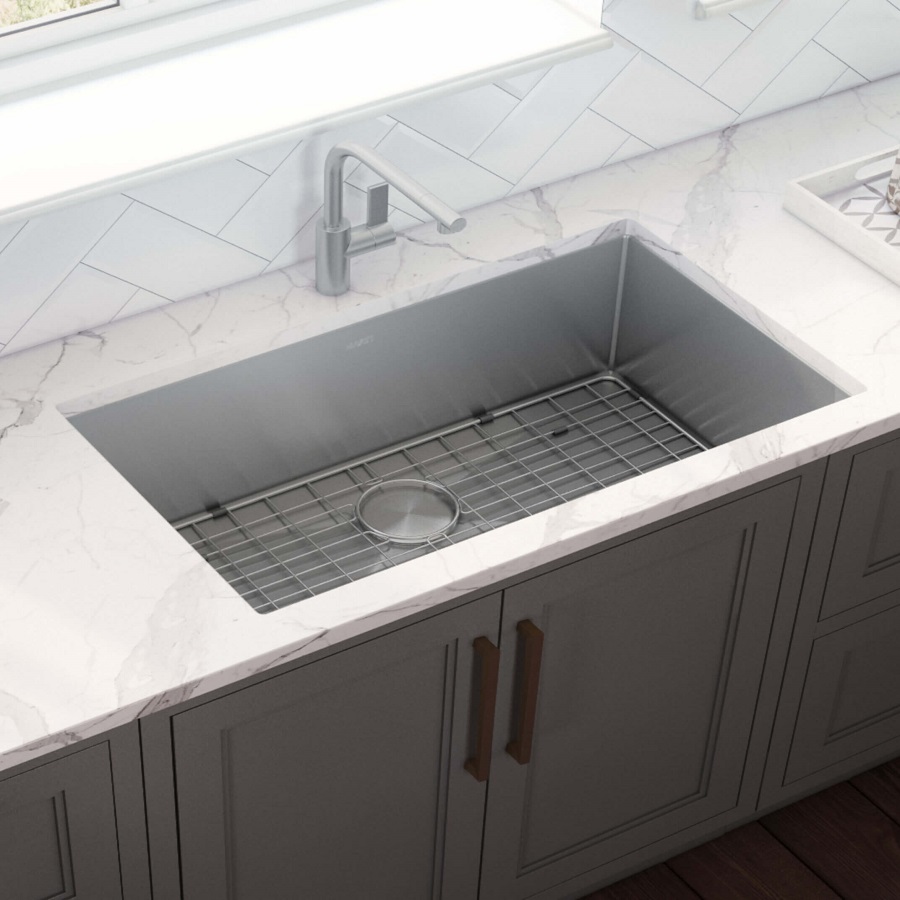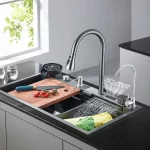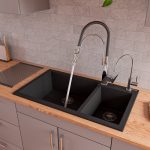Stainless steel kitchen sinks are popular for their durability, sleek appearance, and resistance to stains and odors. However, they still require regular maintenance to keep them looking their best and functioning properly. This guide provides a comprehensive approach to cleaning and maintaining your stainless steel sink, ensuring it remains a shining centerpiece in your kitchen.
Why Clean Stainless Steel Sinks Regularly?
Benefits of Regular Cleaning
Regular cleaning of your stainless steel sink offers several benefits beyond just aesthetics. Keeping your sink clean helps prevent the buildup of grime and mineral deposits, which can cause discoloration and damage over time. Regular maintenance also prevents the growth of bacteria and mold, ensuring a hygienic space for food preparation. Additionally, consistent cleaning helps maintain the sink’s shine and prolongs its lifespan, making it a cost-effective investment in the long run.
Common Issues with Neglected Sinks
Neglecting your sink can lead to several issues, including water spots, rust stains, and a dull appearance. Hard water can leave mineral deposits that create a cloudy film, while food particles and grease can contribute to unpleasant odors and bacterial growth. Rust stains may appear if metal utensils or cookware are left in the sink. Addressing these problems promptly with regular cleaning can prevent them from becoming more severe and harder to remove.
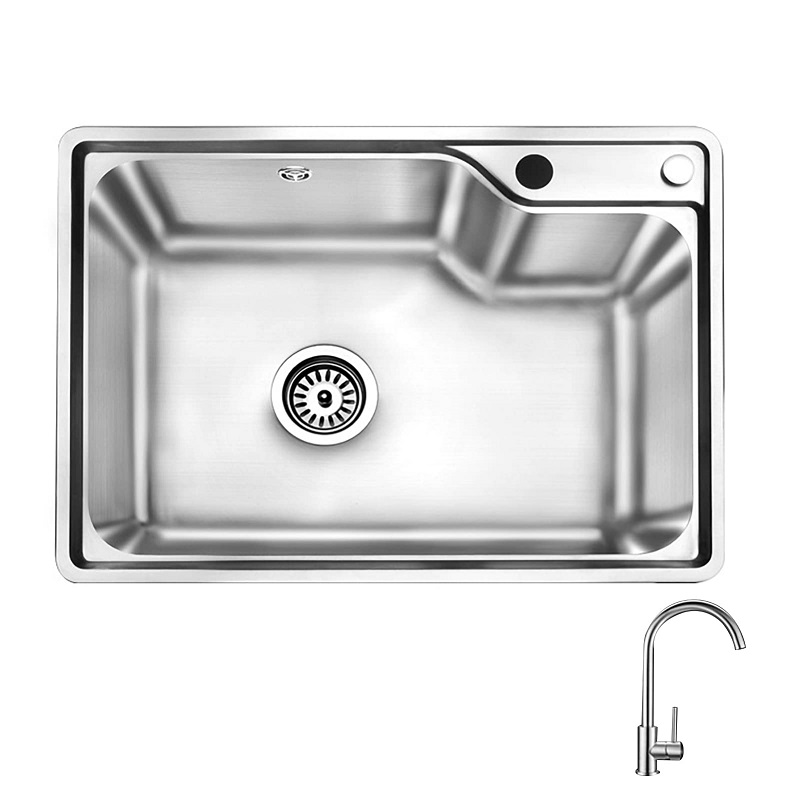
Essential Cleaning Supplies
Choosing the Right Cleaners
To clean your stainless steel sink effectively, it’s important to choose the right cleaning products. Avoid abrasive cleaners or scouring pads, as they can scratch the surface and damage the finish. Instead, opt for non-abrasive cleaners specifically designed for stainless steel. These cleaners help remove dirt and stains without harming the sink’s surface. Additionally, a mild dish soap diluted with water can be used for daily cleaning, while a stainless steel cleaner can help polish and maintain the sink’s shine.
Tools for the Job
Essential tools for cleaning your stainless steel sink include a soft sponge or cloth, a non-abrasive cleaner, a toothbrush for hard-to-reach areas, and a microfiber cloth for polishing. Using these tools helps ensure that you clean the sink thoroughly without scratching or damaging the surface. It’s also a good idea to keep a small brush or toothbrush on hand to clean around the faucet and other hard-to-reach areas where grime can accumulate.
Step-by-Step Cleaning Process
Daily Maintenance Routine
Maintaining your sink daily helps prevent the buildup of grime and stains. Start by rinsing the sink with warm water after each use to remove any food particles and residue. Use a mild dish soap and a soft sponge to scrub the sink gently, paying attention to areas around the faucet and drain. Rinse thoroughly with warm water to remove any soap residue. Dry the sink with a clean, dry cloth to prevent water spots and maintain its shine.
Deep Cleaning Your Sink
For a more thorough cleaning, follow these steps. Begin by removing any items from the sink, such as dish racks or sponges. Sprinkle baking soda over the entire surface of the sink, focusing on areas with stains or discoloration. Use a damp sponge or cloth to scrub the baking soda into the surface, working in circular motions. Baking soda acts as a gentle abrasive that helps lift stains and grime without scratching the stainless steel. Rinse the sink thoroughly with warm water and wipe it dry with a microfiber cloth.
Addressing Stains and Discoloration
Removing Rust Stains
Rust stains can be a common issue with stainless steel sinks, particularly if metal objects are left in the sink for extended periods. To remove rust stains, create a paste using baking soda and water. Apply the paste to the rust stains and let it sit for 10-15 minutes. Gently scrub the area with a soft sponge or cloth, then rinse with warm water. For stubborn rust stains, a commercial rust remover specifically designed for stainless steel may be necessary. Always follow the manufacturer’s instructions and test the product in a small, inconspicuous area first.
Tackling Hard Water Deposits
Hard water deposits can leave a cloudy film on your sink. To remove these deposits, mix equal parts white vinegar and water in a spray bottle. Spray the solution onto the affected areas and let it sit for 10-15 minutes. The acidity of the vinegar helps dissolve the mineral deposits. Use a soft sponge to scrub the area gently, then rinse thoroughly with warm water. For severe deposits, you may need to repeat the process or use a commercial hard water cleaner.
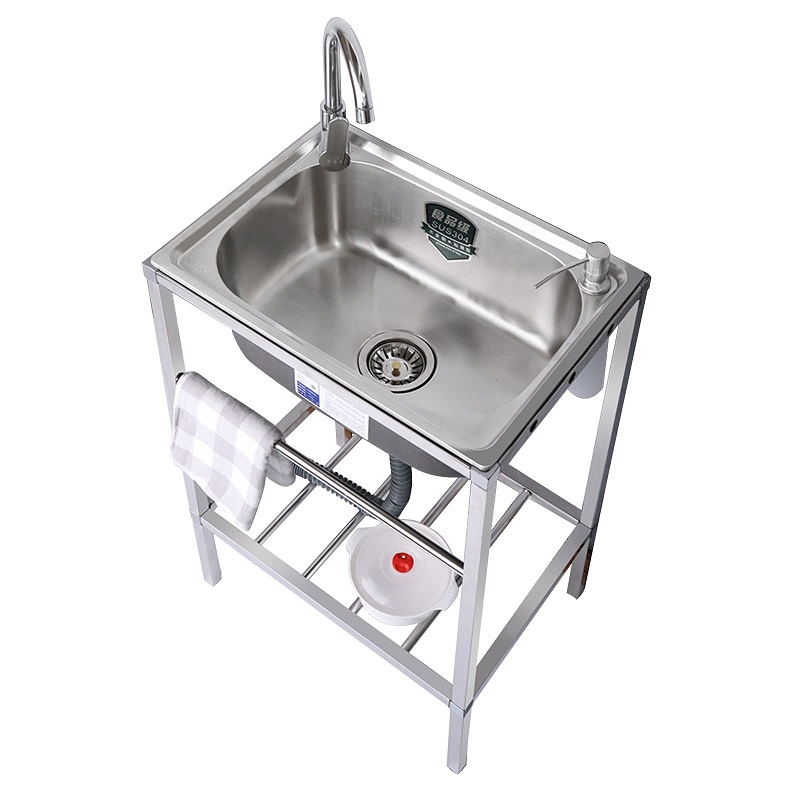
Preventing Future Issues
Regular Maintenance Tips
Preventing future issues involves incorporating some easy habits into your routine. After each use, rinse the sink with warm water and wipe it dry to prevent water spots and mineral buildup. Avoid leaving metal utensils or cookware in the sink for extended periods, as this can lead to rust stains. Use a sink mat or rubber pad to protect the bottom of the sink from scratches and dents. Additionally, consider using a stainless steel cleaner and polish once a week to maintain the sink’s shine and create a protective layer that repels water and grime.
Proper Use and Care
To keep your stainless steel sink in top condition, follow some best practices for use and care. Avoid using harsh chemicals, abrasive scrubbers, or steel wool, as these can damage the sink’s surface. Be cautious when handling acidic substances like lemon juice or vinegar, as prolonged exposure can potentially damage the finish. Always use cutting boards and mats to protect the sink from scratches caused by knives and other utensils. By following these guidelines, you can enjoy a clean, shiny sink for years to come.
Eco-Friendly Cleaning Alternatives
Natural Cleaning Solutions
If you prefer eco-friendly cleaning options, there are several natural solutions you can use to clean your stainless steel sink. Baking soda is a versatile and gentle abrasive that helps remove stains and grime. White vinegar, as mentioned earlier, is effective in dissolving mineral deposits and disinfecting surfaces. Lemon juice can also be used for its natural antibacterial properties and pleasant fragrance. Combine lemon juice with baking soda for a powerful, yet natural, cleaning paste that leaves your sink fresh and sparkling.
Reducing Environmental Impact
Reducing your environmental impact while cleaning involves choosing sustainable products and methods. Opt for cleaning supplies that are biodegradable and free of harmful chemicals. Reuse cleaning cloths and sponges, and consider using microfiber cloths that are durable and effective. By adopting these eco-friendly practices, you contribute to a healthier environment while keeping your kitchen sink in excellent condition.
Conclusion
Summary of Key Points
Cleaning and maintaining your stainless steel kitchen sink involves regular attention and the right techniques. Daily maintenance helps prevent buildup and keeps the sink looking its best, while deep cleaning and stain removal address more significant issues. Using appropriate cleaning products and tools ensures that you clean the sink effectively without causing damage. By following these guidelines and adopting eco-friendly practices, you can maintain a clean, shiny sink and prolong its lifespan.
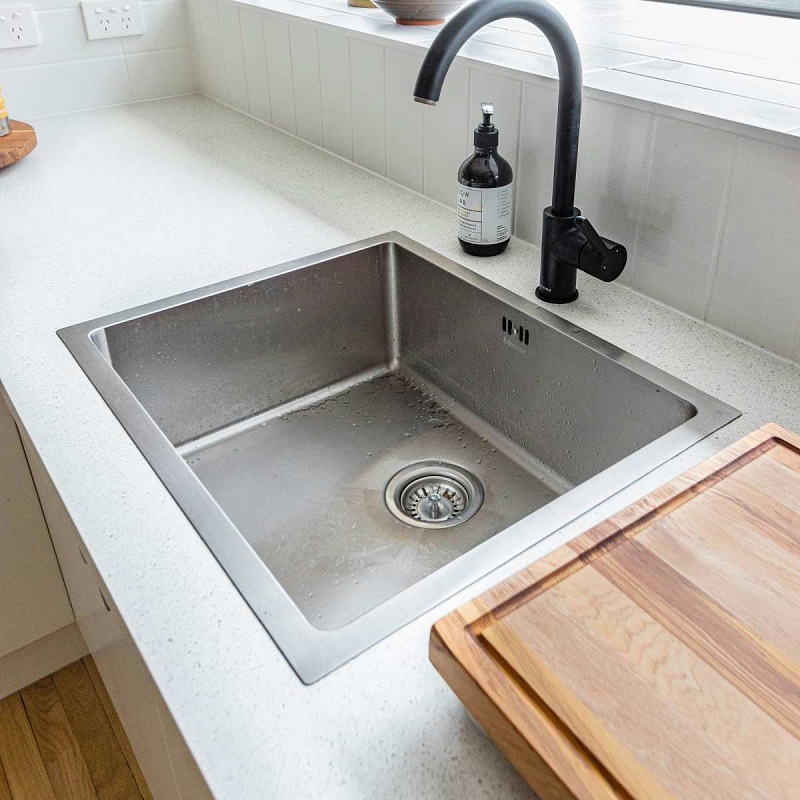
Enjoying a Sparkling Sink
With regular care and the right approach, your stainless steel kitchen sink will remain a gleaming and functional feature of your kitchen. Enjoy the satisfaction of a well-maintained sink that not only enhances the appearance of your kitchen but also contributes to a clean and hygienic cooking environment. Embrace these cleaning techniques as part of your routine to keep your sink in top condition and make the most of this essential kitchen fixture.
